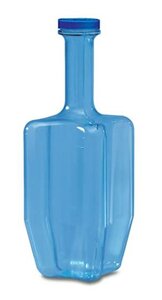Most people know that cooking food is an important step in food safety. But what about cooling food? Cooling gets less attention than cooking, but it can be every bit as important.
The FDA has specific regulations for cooling food safely. These regulations are often called the two-stage cooling process since they’re usually taught to food workers as two stages. Understanding the regulations are critical for all food handlers.
Two stage cooling method
The FDA recommends that food be cooled from 135°F to 41°F (57°C to 5°C) in six hours or less. This time limit helps prevent dangerous bacteria growth. But the guidelines don’t end there. The FDA Food Code has one additional rule: Food must be cooled from 135°F to 70°F (57°C to 21°C) in two hours or less. In this range, bacteria can double in as little as 20 minutes. The faster food passes through this temperature range, the better. Food workers have the rest of the six hours to take food through the remaining temperature danger zone, from 70°F down to 41°F (21°C to 5°C).
This entire cooling process is often called the two-stage cooling process. Some food workers learn it like this:
- Stage 1: Cool food from 135°F to 70°F (57°C to 21°C) in two hours.
- Stage 2: Cool food from 70°F to 41°F (21°C to 5°C) in four hours.
Breaking up cooling guidelines into two stages can make them easier to remember. On the other hand, food workers who learn the guidelines as two stages might misunderstand some things about the regulations. For instance, some food workers may mistakenly take one hour to cool food in Stage 1 and take five hours to cool food in Stage 2 (which is too long). Other food workers might forget that they don’t need to start the clock on their cooling until food enters the Temperature Danger Zone at 135°F (57°C). Learning to properly train employees on cooling techniques is integral to food manager training.
Just knowing the regulations doesn’t mean food workers will follow them. The best way to ensure proper cooling is to make sure food workers understand the reasons behind the rules. It all starts with the temperature danger zone.
The temperature danger zone
Bacteria grow best in food in the temperature range between 135°F – 41°F (57°C – 5°C). This range is so effective for bacteria growth that it’s called the temperature danger zone.
As food is cooled, it passes through the temperature danger zone, giving bacteria time to multiply. If left out to cool, cooked food can become unsafe in a matter of hours. The cooling step gives bacteria a chance to multiply to dangerous levels—if bacteria growth isn’t controlled while food cools. That’s why the FDA guidelines are so effective. These guidelines ensure that food passes through the temperature danger zone quickly so bacteria don’t have a chance to make food unsafe.
Proper cooling methods for food
It can be tricky to cool a large batch of hot food. Strategies for cooling can help take the heat out of the situation.
- Separate food into smaller portions. A large pot of hot food put right into the fridge can become dangerous. The food in the middle of the pot will cool much more slowly than t
he food around the edges. Rice is a particular danger for this scenario since it holds heat so well. Instead, separate food into containers that are 4 inches deep or less. - Cover food loosely while it cools. This lets heat escape more easily while food cools in the fridge. If food is protected from contamination from above, it can be left uncovered while it cools.
- Stir loose foods. Stirring is not an option for some foods, like casseroles, but for loose foods it can be helpful to even out cooling.
- Use an ice bath. Surround a container of food with ice water. Ideally, the water level should sit above the top level of the food.
- Add ice as an ingredient. If ice isn’t an option, use an ice paddle to get the same effect without the added liquid.
- Use a blast chiller or tumbler. These appliances can cool large amounts of food quickly. They work well for both solid and liquid foods.
- Download and print: Click on the image above to download and print out the poster.
- Share the link: Share https://www.statefoodsafety.com/Resources/Posters/two-stage-cooling-process on your website or social media.
- Embed the poster on your site by copying this code: <a href=”https://www.statefoodsafety.com/Resources/Posters/two-stage-cooling-process”><img src=”https://cdn.statefoodsafety.com/blog/2014/09/DM_Cooling_Blog.jpg” width=”100%” border=”0″ /></a>
Editor’s note: This post was originally published in September 2014 and has been updated for freshness, accuracy, and comprehensiveness






